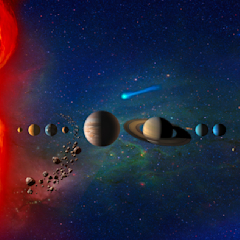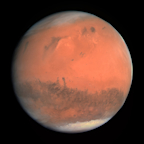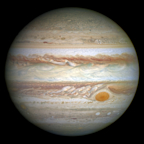Search results
The Solar System [d] is the gravitationally bound system of the Sun and the objects that orbit it. [11] It formed about 4.6 billion years ago when a dense region of a molecular cloud collapsed, forming the Sun and a protoplanetary disc.
3 days ago · Solar system, assemblage consisting of the Sun and those bodies orbiting it: 8 planets with about 210 known planetary satellites; many asteroids, some with their own satellites; comets and other icy bodies; and vast reaches of highly tenuous gas and dust known as the interplanetary medium.
Learn about the planets in our solar system. The solar system has eight planets: Mercury, Venus, Earth, Mars, Jupiter, Saturn, Uranus, and Neptune. There are five officially recognized dwarf planets in our solar system: Ceres, Pluto, Haumea, Makemake, and Eris. Get the Facts.
Solar System. Diamond rain, supersized volcanoes, exploding oceans - and we have a front row seat for it all. Professor Brian Cox reveals the strange worlds visible to us as never before.
Mar 27, 2019 · The solar system, explained. Our solar system is made up of the sun and all the amazing objects that travel around it. The universe is filled with billions of star systems. Located inside...
Our solar system includes the Sun, eight planets, five officially named dwarf planets, and hundreds of moons, and thousands of asteroids and comets. Our solar system is located in the Milky Way, a barred spiral galaxy with two major arms, and two minor arms.
Our solar system consists of our star, the Sun, and everything bound to it by gravity – the planets Mercury, Venus, Earth, Mars, Jupiter, Saturn, Uranus, and Neptune; dwarf planets such as Pluto; dozens of moons; and millions of asteroids, comets, and meteoroids.
Find out about the solar system and learn the order of the planets with a song in a Bitesize KS2 Science Explainer.
Explore the 3D world of the Solar System. Learn about past and future missions.
Mar 15, 2016 · Our solar system is made up of a star—the Sun—eight planets, 146 moons, a bunch of comets, asteroids and space rocks, ice, and several dwarf planets, such as Pluto. The eight planets are Mercury, Venus, Earth, Mars, Jupiter, Saturn, Uranus, and Neptune.




















